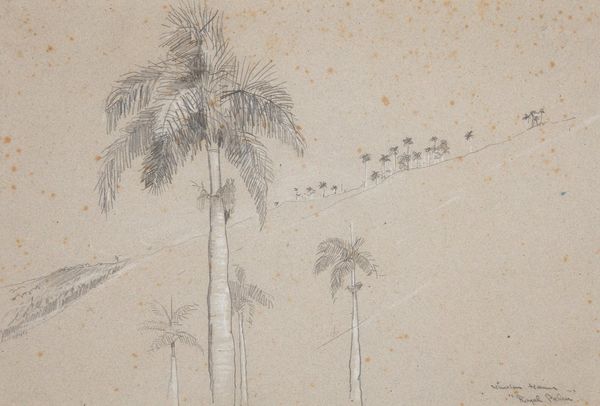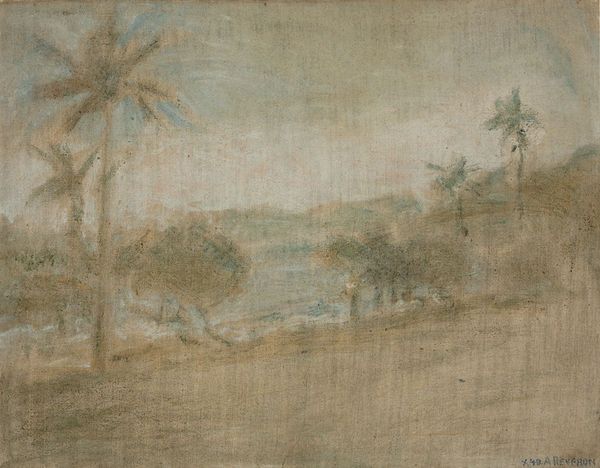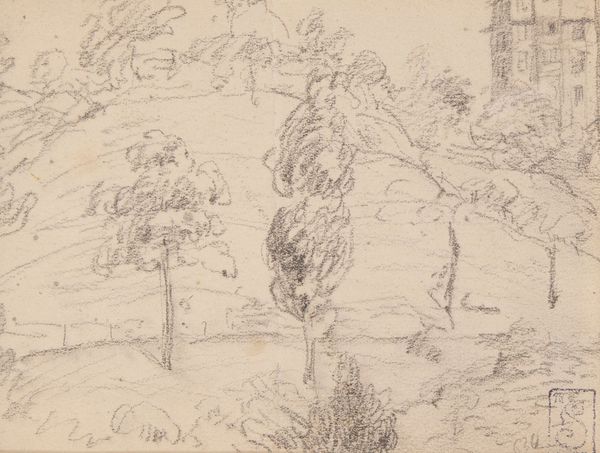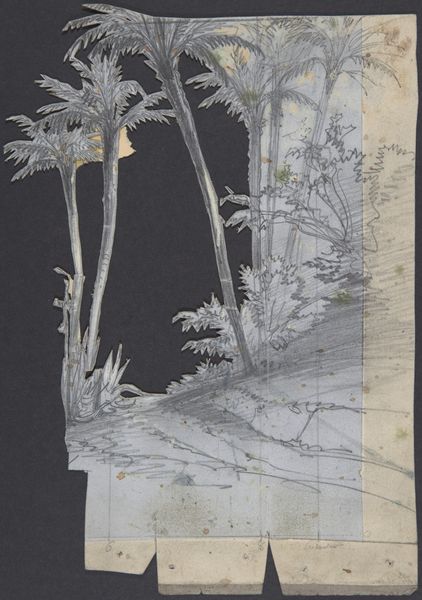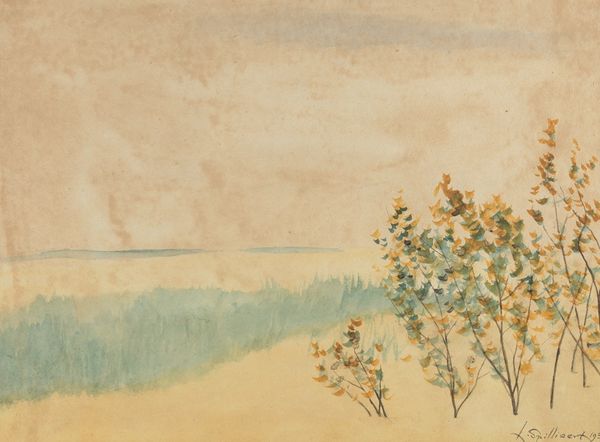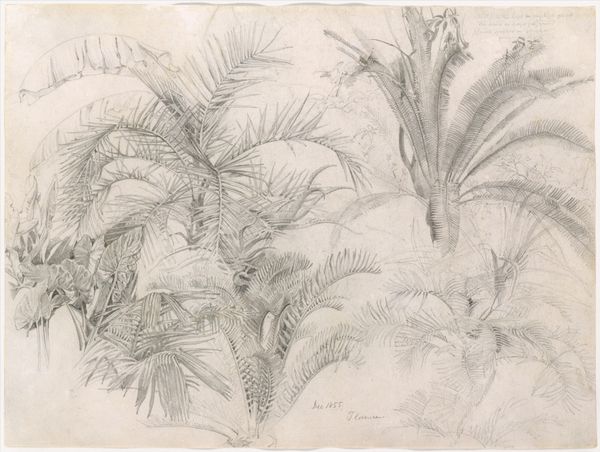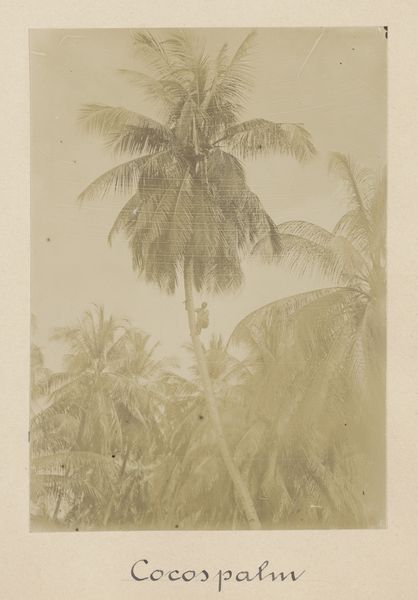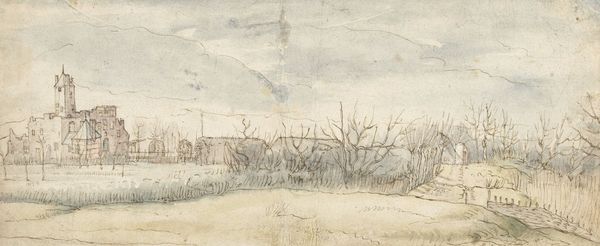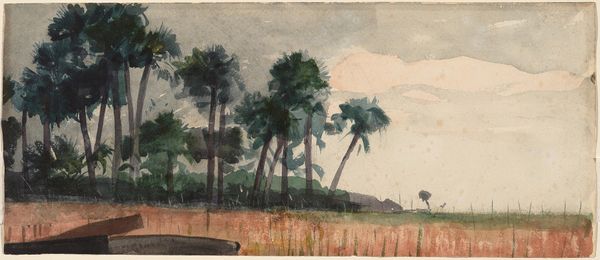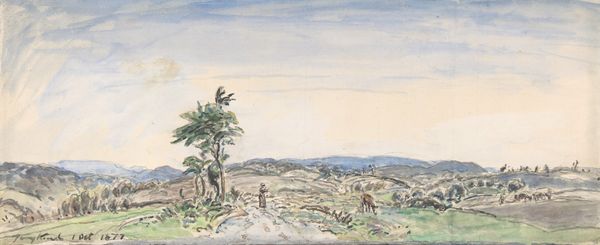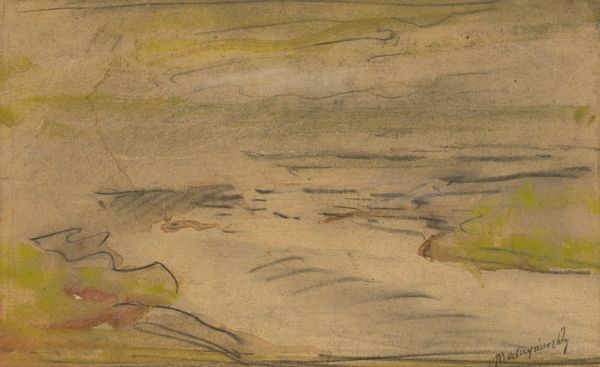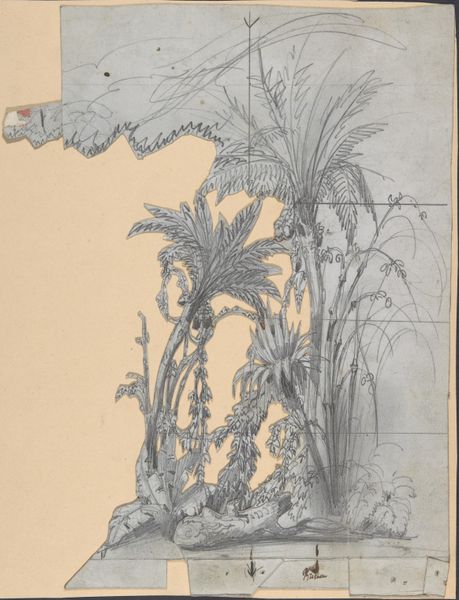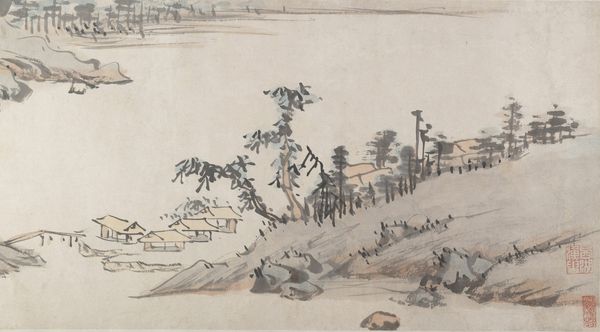
drawing
#
drawing
#
toned paper
#
rough brush stroke
#
incomplete sketchy
#
charcoal drawing
#
possibly oil pastel
#
underpainting
#
watercolour bleed
#
watercolour illustration
#
mixed medium
#
watercolor
Copyright: Public Domain: Artvee
Winslow Homer made this drawing of a Cuban hillside in 1885, using graphite on paper. It's a study, really, a quick impression rendered in a readily available material. While the scene itself seems idyllic, we should also consider the social and economic context of Cuba in the late 19th century. The island was then a Spanish colony, its economy largely based on sugar plantations. These plantations relied heavily on enslaved labor until slavery was finally abolished in 1886. Homer's choice of a humble graphite pencil is interesting in this light. It's a far cry from the grand oil paintings that were considered high art at the time. The simplicity of the medium, and the ease with which it allows for capturing a scene, might even be seen as a democratic gesture, a way of connecting with the everyday reality of the Cuban landscape and its people. It reminds us that art doesn't always need to be monumental to be meaningful.
Comments
No comments
Be the first to comment and join the conversation on the ultimate creative platform.
